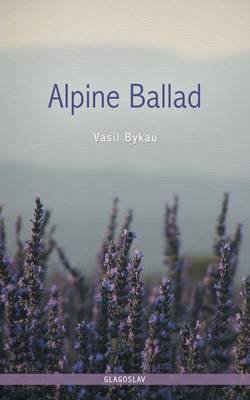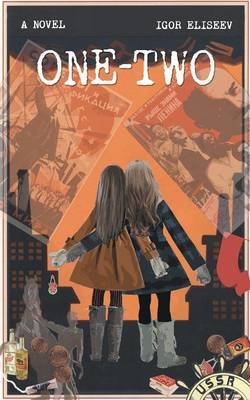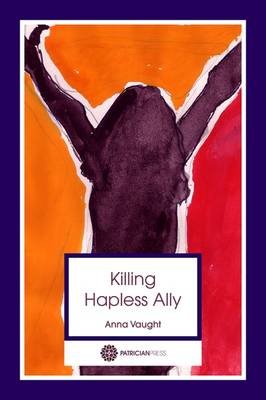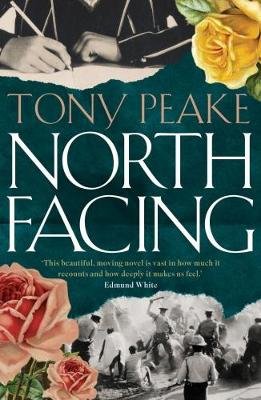It has been quieter on here lately than I would have liked. I was hoping to devote a bit more time to blogging in December, but unfortunately life has intervened again and I have to concentrate on other things instead. I will definitely do a full end-of-year countdown, but otherwise it’ll probably be short round-up posts for now.
Author: David Hebblethwaite
Round-up: A.L. Kennedy and Guy Bolton
A.L. Kennedy, The Little Snake (2016)

The Little Snake is a novella inspired by Saint-Exupéry’s The Little Prince (which,for context, I haven’t read). It was first published in Germany a couple of years ago, and now has a UK edition courtesy of Canongate. It’s also my first time reading A.L. Kennedy.
One day, a girl named Mary meets Lanmo, a handsome talking snake who becomes her best friend. Mary is the first human Lanmo has befriended: normally he travels the world ushering humans out of their lives. The snake visits Mary at various points in her life, seeing that her city is increasingly ravaged by war and that she is in ever greater danger. For the first time, Lanmo starts to have feelings about what he does; in particular, he wants to ensure Mary’s safety, though he knows the time will come when they must part.
The Little Snake is written as a fable, and Kennedy’s prose has a wonderful ‘tale for all ages’ quality. It’s a tale of losing and finding one’s place, what we lose and what there is to treasure.
The Little Snake (2016) by A.L. Kennedy, Canongate Books, 132 pages, hardback (source: review copy).
***
Guy Bolton, The Pictures (2017)

Guy Bolton’s debut novel is a murder mystery set in Hollywood in 1939. Herbert Stanley, a producer on The Wizard of Oz, is found hanged: the case is assigned to Detective Jonathan Craine, the police force’s regular fixer when it comes to MGM matters. Craine’s job is to ensure that Stanley’s death is treated as an open-and-shut case of suicide, this being the least disruptive option for the studio.
However, things soon get complicated: Craine becomes romantically involved with Stanley’s widow, actress Gale Goodwin; and there are distinct signs of foul play about the apparent hanging. As Craine digs deeper, events spiral out to encompass organised crime; there are some gripping set pieces along the way. Crane’s development as a character is also engaging: he starts off as a pretty repugnant sort who has no qualms about pinning an (apparently unrelated) murder on a scapegoat, and becomes – if not entirely sympathetic – at least more thoughtful and scrupulous. I enjoyed The Pictures, and I’ll be reading its sequel, The Syndicate, in due course.
The Pictures (2017) by Guy Bolton, Point Blank, 400 pages, paperback (source: review copy).
T Singer – Dag Solstad

The Norwegian author Dag Solstad has been on my List of Writers to Read Eventually for quite some time. My main reason for reading this particular book right now is wanting to get a head start on some potential contenders for next year’s Man Booker International Prize (I have others lined up to read, too). Each of Solstad’s three previous novels translated into English were listed for the old IFFP, so why shouldn’t this do the same with the MBIP? (Maybe because he’ll have two eligible titles next year – the other is Armand V – but I’ll gloss over that…)
Anyway, that’s the pretext: what about the novel?
Solstad’s protagonist is outwardly unremarkable, not even receiving a full name (and the ‘T’ appears only in the book’s title). Singer feels that “his place was to be found in total anonymity”; indeed that’s where he “thrives”. He also has a detailed inner life: at the start of the novel, we are plunged into a sequence showing how Singer dwells on some of his misunderstandings, such as mistaking one acquaintance for another:
What was it he said to K, whom he thought was B? Perhaps something about how dark the room was. Perhaps something about the film (or the jazz concert) they were about to see (or hear). Perhaps some slightly joking remark about the weather, the chairs, the table, the candlelight. Perhaps a comment about a third mutual acquaintance, Y, whom K also knows, spoken in a somewhat different tone than he would have used if talking to K about Y.
(translation by Tiina Nunnally)
So it goes on, with various what-ifs around B, K and Y. I got a bit lost in the middle of this early passage, yet it was exhilarating to read. The level of detail draws everything out to the edge of absurdity, where something that might seem sensible to a character could easily be mistaken for something ridiculous (or vice versa).
The novel continues in this discursive vein as it chronicles Singer’s move to the small town of Notodden to become a librarian, which he thinks will be a good profession for attaining the anonymity he seeks. In due course, Singer falls in love with and marries a ceramicist named Merete Særthe, moving in with her and her daughter Isabella. Even this does not disrupt Singer’s sense of self, because the role of the family man is what completes his anonymity.
To begin with, Singer is quite comfortable with his tendency to keep the world at a distance; but the second half of the novel turns this on its head. As Isabella grows up, Singer finds her as distant from him as he always preferred to be from others:
But why did she behave with such intent seriousness within this childhood she’d been given, which many would say was a gift? As if the whole time she were mimicking something that she realised should have brought her delight? Singer didn’t know, but now and then he would be seized by anxiety when he saw her involved in such withdrawn activity.
I’ve sometimes seen Steve Mitchelmore refer to ‘lightness’ in fiction, meaning “the quality of great seriousness without it being overt,” (to quote a tweet of his). This kept coming to mind when I was reading T Singer, because it felt as though Solstad’s prose was skipping “like a stone across deceptively calm waters” (quoting a tweet of my own, here). For example, it hops from work to love to family with deft footwork, yet beneath that is the essential loneliness of Singer’s desire to push the world away: something that he won’t confront, in the same way that Solstad’s writing doesn’t face it directly. Then, when Singer’s distancing turns around to bite him, the same narrative technique represents the gulf between him and Isabella. Nunnally’s translation is superb in capturing the vertiginous quality of Solstad’s prose. I hope that T Singer will receive a nod in the MBIP next year – certainly it deserves to.
Read other reviews of T Singer at 1streading’s Blog; The Modern Novel; and The Complete Review.
Book details
T Singer (1999) by Dag Solstad, tr. Tiina Nunnally (2018), Harvill Secker, 263 pages, hardback (source: personal copy).
Three Dreams in the Key of G – Marc Nash: a Splice review

The focus at Splice this week is Marc Nash and his latest novel, Three Dreams in the Key of G, which is published by Dead Ink Books (who are also behind the Eden Book Society). I’ve reviewed Three Dreams, which I found fascinating to read and write about. Let me introduce it…
Three Dreams has three narrators: Jean Ome, a mother living in Ulster; Jean Ohm, who runs a women’s refuge in Florida; and the human genome itself. They speak in what I’ve called “extravagantly articulate” voices, that ask you to slow down and listen. Several themes recur throughout – such as language, writing, and agency – refracted through each narrator’s individual perspective. The novel ranges from everyday human life to some of the fundamentals of biology and existence.
One of the things I find most interesting about Three Dreams is how it’s structured to reflect aspects of DNA: for example, there isn’t a conventional linear plot, as befits unguided genetic reproduction. The language and themes form a network of relationships, as genes are expressed.
If all this sounds intriguing, you can read more in my review, and Splice also has an interesting Q&A with Nash about the novel.
Book details
Three Dreams in the Key of G (2018) by Marc Nash, Dead Ink Books, 216 pages, hardback (source: personal copy).
Bird Cottage – Eva Meijer: a EuroLitNetwork review

It has been a while, but I’m pleased to be back at the European Literature Network for this month’s #RivetingReviews section. The book I’m reviewing is Bird Cottage by Eva Meijer (translated from the Dutch by Antoinette Fawcett). It’s a novel about the life of a historical figure who was unknown to me: Gwendolen (Len) Howard, a concert violinist who, aged 40,changed her life and moved to a Sussex cottage to study the birds in her garden. She published two books, and her ideas were ahead of her time, but her work was not taken seriously by the scientific establishment.
Bird Cottage is a fascinating story; click here to read my review in full.
Book details
Bird Cottage (2016) by Eva Meijer, tr. Antoinette Fawcett (2018), Pushkin Press, 256 pages, hardback (source: review copy).
Convenience Store Woman – Sayaka Murata: a Splice review

I’m back at Splice this week with a review of Convenience Store Woman by Sayaka Murata (translated from the Japanese by Ginny Tapley Takemori). It’s the story of Keiko Furukura, who has worked at a convenience store for 18 years because it is the only place she feels ‘normal’ – and now her carefully ordered existence is under threat…
Convenience Store Woman has turned out to be one of my favourite books of the year. It challenges the reader to empathise with Keiko, then builds up to one of the most powerful endings I have read in a long time.
The review itself is one of my longer ones, about 2,000 words. It was a pleasure to get under the skin of a novel that had affected me so much; I hope you enjoy reading the result.
Book details
Convenience Store Woman (2016) by Sayaka Murata, tr. Ginny Tapley Takemori (2018), Portobello Books, 176 pages, paperback (source: personal copy).
A pair from Glagoslav
Today I’m looking at two books from Glagoslav Publications, who specialise in Slavic literature. I have a contemporary Russian novel for you, and a Belarusian classic.

Vasil Bykau, Alpine Ballad (1964)
Translated from the Belarusian by Mikalai Khilo (2016)
This is the first Belarusian book I’ve read (in terms of both country and original language). From what I’ve read about him, Vasil Bykau (1924-2003) is one of the most significant figures in Belarusian literature. Glagoslav’s edition of Alpine Ballad is the first English translation to be based on Bykau’s original, uncensored manuscript.
During the later years of World War Two, a bomb explodes in an Alpine concentration camp. Ivan, a Belarusian soldier, makes good his escape. Shortly after, he comes across Giulia, a young Italian woman who was also being held prisoner in the camp. She doesn’t speak a lot of Russian, but through a mixture of that, German and Italian, the two are able to understand each other. We then follow them over the course of a few days as they try to evade capture and reach safety.
Alpine Ballad is a briskly told tale, constantly in motion. Bykau’s action sequences, when Ivan and Giulia are on the run, are gripping. There are also some really affecting moments where it becomes clear how the pair are developing feelings for each other. Giulia has an idealised image of Soviet communism, which Ivan is quick to dispel. This combination of social commentary, romance and action makes Alpine Ballad compelling reading.

Igor Eliseev, One-Two (2016)
Igor Eliseev is a Russian writer who writes in English; One-Two is his debut novel. This is the story of two conjoined sisters named Vera (our narrator) and Nadezhda – or Faith and Hope, as they are referred to throughout the book. The girls spend much of their childhood in a series of dismal institutions, including a foster home whose principal dubs them ‘One’ and ‘Two’, and where they’re subjected to much worse indignities than that. Eventually the sisters run away from the home and head to the city, hoping to find a place for themselves.
One-Two is a harrowing book, as Faith and Hope travel a difficult road. The history of 1980s and ’90s Russia unfolds in the background, and there’s a sense that Eliseev is reflecting this in the personal story of his protagonists. As well as everything that happens to them from without, the girls face their own internal struggles, as their very different personalities come to the fore. There is the tantalising prospect that they may be able to undergo separation surgery, which leads the pair to wonder what it might be like to have their own individual body, for all that the consequences may be drastic. One-Two is an interesting character study, and a powerful tale of personal struggle.
Book details
Alpine Ballad (1964) by Vasil Bykau, tr. Mikalai Khilo (2016), Glagoslav Publications, 206 pages, paperback (source: review copy).
One-Two (2016) by Igor Eliseev, Glagoslav Publications, 244 pages, paperback (source: review copy).
Reading out loud: The Girls of Slender Means
I’ve been intending to read Muriel Spark (last time was The Driver’s Seat) again all year, what with it being her centenary. It took me until the autumn to actually do that, but better late than never…
I’m trying something a bit different with this post, taking inspiration from that Twitter discussion of The Rings of Saturn in the summer. I tweeted my thoughts on The Girls of Slender Means as I was reading it, and am now collecting them together here. I’ve called this “reading out loud” because it’s more off the cuff and impressionistic than a proper review would be. I felt that a ‘known’ book like this could support that kind of post.

To introduce the book briefly: The Girls of Slender Means was first published in 1963. It’s mostly set in 1945, and concerns the May of Teck Club, a London hostel for women aged under 30. I’ve expanded the original tweets a little for clarity, but still I doubt the post below will make much sense if you haven’t read the novel. If you’re looking for a recommendation, though… consider the book recommended!
***
It’s been too long since I last read Muriel Spark. I’m enjoying it from the first sentence: “Long ago in 1945 all the nice people in England were poor, allowing for exceptions.” Instantly recognisable voice: reading it feels like coming home.
Already the narrative is being subtly destabilised (which I’m coming to expect from Spark). The present-day passages feel more like intrusions than an alternative plot strand.
Interesting that present-day passages (which discuss a character’s death) are all telephone conversations. I need to read further to understand what this means, but I’m thinking it’s perhaps a comment on the distance created by that form of communication.
I love the little details that punctuate a scene with humour, such as the arguments over brown wallpaper in the drawing-room, or the frequent soundtrack of lines from Joanna’s elocution lessons.
Just twigged that there’s a theme of missed (or misunderstood) communication: the present-day phone calls that break up, the rote learning of elocution lessons (lines that are repeated but not necessarily felt by the person saying them).
A bomb explodes in the club’s garden towards the end of the book. Interesting that this is explicitly framed as disrupting the girls’ sense of time and space. Time is experienced differently by those trapped inside the club, and those outside who realise how urgent the situation is.
Besides bringing the plot to a point of singularity, the fire seems to bring individual characterisation to a head. I noticed this especially with Joanna reciting her elocution lines – which manage to be both empty and all too meaningful.
The closing scene of murder and violence amidst the WW2 victory celebrations underlines themes of darkness beneath events and distance from authority that have run through the book.
I love that the final paragraph manages simultaneously to link back to the start of the novel, push forward into the future, *and* leave the present both open and closed off.
Book details
The Girls of Slender Means (1963) by Muriel Spark, Penguin Books (2013 edn), 144 pages, paperback (source: personal copy).
Round-up: Aussie crime and famous teeth
I’m trying out different ways of writing about books, because I was getting a bit tired of the cycle of read, review, read, review. I’d like my blogging to be more responsive to how I read: to group things together, zoom in and out, make connections, and so on. This is one post format that I’m going to try out: a round-up of shorter comments on a few books that I’ve read. We start this round-up with a couple of Australian crime novels…

Emily Maguire’s An Isolated Incident explores the aftermath of a young woman’s murder in a small Australian town through the eyes of two characters: the victim’s older sister, and a journalist sent to cover the story. Where you might normally expect a mystery to give a sense of progressing towards a solution, there’s a void at the centre of Maguire’s mystery, which fills up withmore and more uncertainty. It’s engrossing stuff, with a strong narrative voice.

And Fire Came Down by Emma Viskic is the sequel to Resurrection Bay, once again featuring deaf investigator Caleb Zelic. This novel begins with a young woman dying in front of Caleb moments after she has sought him out, and sees the protagonist follow her trail to his home town. He becomes caught up in the local drug trade as he tries to find out who the woman was and why she wanted to find him. Like its predecessor, And Fire Came Down is briskly told with plenty of intrigue in plot and character.

From Australia to Mexico: The Story of My Teeth (tr. Christina MacSweeney) is the first book I’ve read by Valeria Luiselli. It’s narrated by one Gustavo Sánchez, an auctioneer who buys Marilyn Monroe’s teeth to replace his own, then auctions off the old ones by making out that they belonged to famous people. Then it gets stranger… I found this book great fun to read: tricksy and playful, with a serious exploration of how the meaning of an object (such as a tooth) shifts when you change the context. After this, I’ll be looking forward to reading more of Luiselli’s work.
Book details
An Isolated Incident (2016) by Emily Maguire, Lightning Books, 320 pages, paperback (source: review copy).
And Fire Came Down (2017) by Emma Viskic, Pushkin Vertigo, 344 pages, paperback (source: review copy).
The Story of My Teeth (2013) by Valeria Luiselli, tr. Christina MacSweeney (2015), Granta Books, 196 pages, paperback (source: review copy).
Ninja Book Box reading: Anna Vaught and Tony Peake
For a while now, I’ve been a reader for Ninja Book Box, a quarterly subscription box and monthly book club focused on small press titles. Today, I thought I’d post reviews of a couple of the books I’ve read for them recently.
Anna Vaught, Killing Hapless Ally
This (semi-autobiographical) debut novel is a vivid portrait of an individual living with mental health problems. Our protagonist is Alison, who intends to do away with Hapless Ally, an alter ego she devised in childhood to be a more acceptable face to show the world – an alter ego that has overshadowed her life ever since.
Killing Hapless Ally is a compelling tour of Alison’s life. We’re immersed in her fraught childhood (her mother would tell Alison that she should have left her to die as a baby, for instance), and discover some of the ways she found to deal with the scars it left throughout her life (for example, Alison has a veritable company of famous imaginary friends, including Shirley Bassey, Albert Camus, and Frida from ABBA).
Though most of the novel is written in third person, we’re firmly viewing things from Alison’s viewpoint. For example, most characters are referred to by nicknames or pseudonyms (Alison’s mother is Santa Maria, a psychiatrist is referred to as Dr Mirror-Neuron, and so on), and the narrative is organised thematically as much as chronologically, whatever suits Alison. These techniques help reshape the novel’s world, bringing us that bit closer to Alison. This is not necessarily a comfortable place to be, but it is thoroughly engaging, sometimes darkly amusing, and ultimately uplifting. Killing Hapless Ally is warmly recommended.

Killing Hapless Ally (2016) by Anna Vaught, Patrician Press, 276 pages, paperback (source: review copy).
Killing Hapless Ally is the choice for this month’s Ninja Book Club.
Tony Peake, North Facing
In 1962, Paul Harvey is at boarding school in Pretoria, South Africa. His English parentage marks him as an outsider, but he’s keen to join the most exclusive club in school: the friendship circle of one Andre du Toit. At first, du Toit appears nothing but a bully, but then he starts to be more friendly towards Paul – and soon Paul finds himself part of du Toit’s group.
Du Toit is known to set the members of his club tasks in order for them to keep their place. Paul’s secret mission is to keep an eye out for anything unusual at the meetings of Mr Spier’s after-school General Knowledge club, write a report for du Toit, and steal whatever he notices. All is not as it seems, however, and the ramifications of Paul’s task can still be felt fifty years later, when he returns to South Africa to face the past.
North Facing is an interesting character study that takes in large events and issues (such as apartheid and the Cuban Missile Crisis) but explores them from a small, personal viewpoint. The key turning points of the plot emerge only gradually, which is a very effective touch. The present-day strand feels a little underplayed, as it turns out to be more of a frame than an equal plot thread. But overall, this quiet-seeming novel is well worth a read.

North Facing (2017) by Tony Peake, Myriad Editions, 176 pages, paperback (source: review copy).
Recent Comments